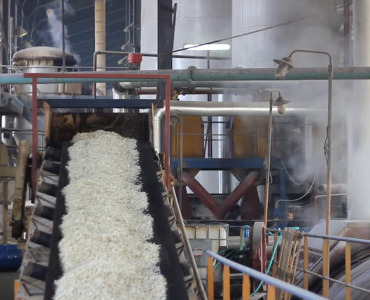High-grade Cane Sugar Processing Chemicals: Dependable and Safe
High-grade Cane Sugar Processing Chemicals: Dependable and Safe
Blog Article
Maximizar Rendimientos Y Minimizar Costos: Estrategias Avanzadas Para La Optimización Química Del Procesamiento De Azúcar De Caña
In the world of walking cane sugar handling, the pursuit of optimizing returns while simultaneously lessening prices stands as an awesome obstacle that calls for a critical mix of innovative chemical optimization techniques. Among this elaborate internet of approaches exists the guarantee of unlocking untapped potential and transforming the extremely essence of sugar manufacturing.
Chemical Analysis for Efficiency
Chemical analysis plays a pivotal duty in boosting the performance of sugar cane processing by providing essential insights right into the structure and buildings of the raw products. By carrying out detailed chemical evaluations on sugar cane samples, processors can figure out the precise concentrations of sucrose, sugar, fructose, and various other components existing in the raw material. This information is vital for maximizing the different stages of the sugar walking cane processing chain, from milling to formation.
Furthermore, chemical analysis makes it possible for cpus to determine contaminations such as natural acids, proteins, and minerals that can affect the quality and return of the final sugar item. By measuring these impurities, processors can apply targeted methods to remove or minimize their impacts, inevitably enhancing the total effectiveness of the processing plant.
In addition, chemical analysis promotes the tracking of procedure parameters such as pH, temperature level, and thickness, allowing cpus to make real-time adjustments to make sure ideal problems for sugar extraction and formation. Overall, a detailed understanding of the chemical composition of sugar walking cane is important for making best use of returns, lessening prices, and maintaining high product high quality in the sugar manufacturing industry.

Enzyme Utilization for Raised Yields
With a strategic technique to enzyme utilization, sugar walking stick cpus can substantially boost their yields while keeping operational effectiveness in the manufacturing procedure. Enzymes play a critical role in sugar walking cane processing by breaking down intricate carbohydrates into less complex sugars, hence increasing the overall sugar removal efficiency. By integrating details enzymes tailored to target the different elements of sugar walking cane, such as cellulose and hemicellulose, cpus can improve the release of sugars throughout removal.
Enzyme utilization uses the benefit of taking full advantage of sugar returns from the raw product while minimizing the energy and sources needed for handling. This results in a more sustainable and economical manufacturing procedure. In addition, enzymes can assist in reducing processing time and boosting the total top quality of the sugar item. Via careful selection and application of enzymes, sugar cane processors can optimize their operations to achieve higher yields and success.
Ph Control for Ideal Processing
Enzyme usage for boosted returns in sugar check it out cane handling lays the foundation for dealing with the essential aspect of pH control for ideal handling performance. Keeping the appropriate pH level throughout different phases of sugar walking cane processing is necessary for optimizing returns and minimizing costs. By thoroughly keeping an eye on and readjusting the pH degrees at various handling actions, sugar walking cane cpus can improve sugar healing prices, minimize chemical use, and maximize the total manufacturing process.
Advanced Filtering Strategies
Executing advanced filtration techniques in sugar walking cane handling boosts the performance and pureness of the last item via improved splitting up techniques. By integrating innovative filtering innovations, such as membrane filtration and triggered carbon filtration, sugar cane processing plants can attain higher degrees of sugar healing and improved quality control.

Triggered carbon filtration is another innovative strategy that assists in the elimination of colorants, off-flavors, and residual impurities from sugar walking cane items. By using activated carbon's adsorption residential or commercial properties, this filtration approach improves the clarity and taste of the sugar, satisfying the high standards required by customers and industry regulations.
Energy-Efficient Purification Methods
Energy-efficient purification methods are necessary for enhancing the Website sugar walking cane handling industry's power consumption while preserving top quality item standards. Typical distillation procedures can be energy-intensive, leading to higher production costs and environmental effects (Cane Sugar Processing Chemicals). Carrying out energy-efficient purification methods, such as vacuum cleaner purification or molecular purification, can considerably minimize power demands while boosting overall process efficiency
Vacuum distillation includes reducing the pressure within the distillation system, which decreases the boiling point of the fluid mixture being processed. This decrease in boiling point decreases the energy required for evaporation, resulting in power savings compared to standard purification why not find out more methods.
On the other hand, molecular purification uses brief course purification methods under high vacuum cleaner problems to different compounds based on their molecular weight. This method is especially efficient for heat-sensitive compounds, as it runs at reduced temperature levels, minimizing power intake and preserving product quality.
Conclusion

Report this page